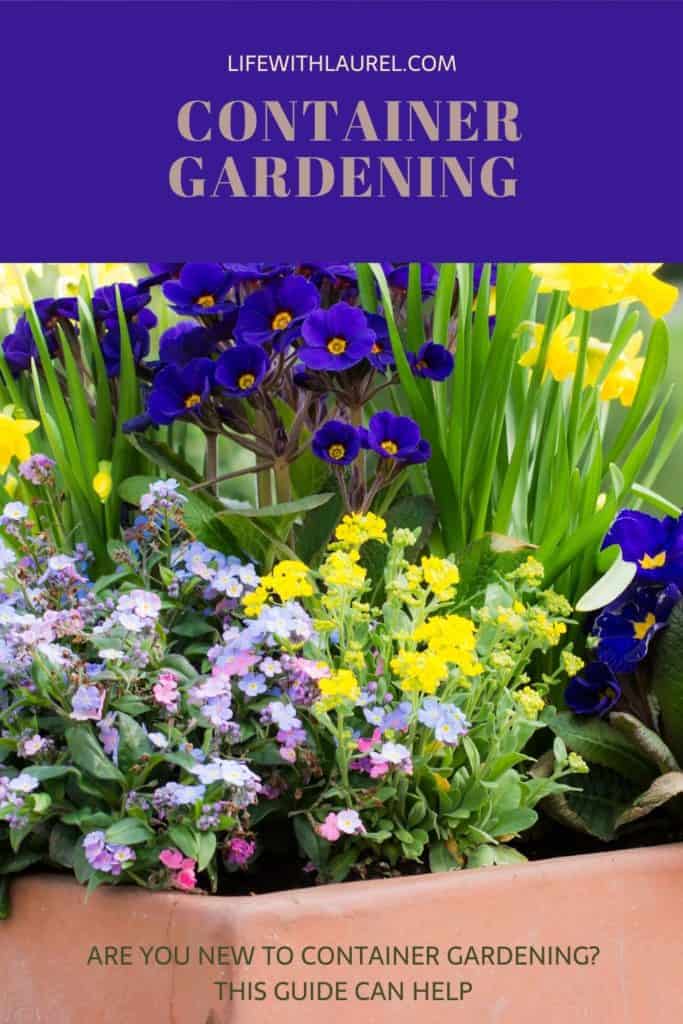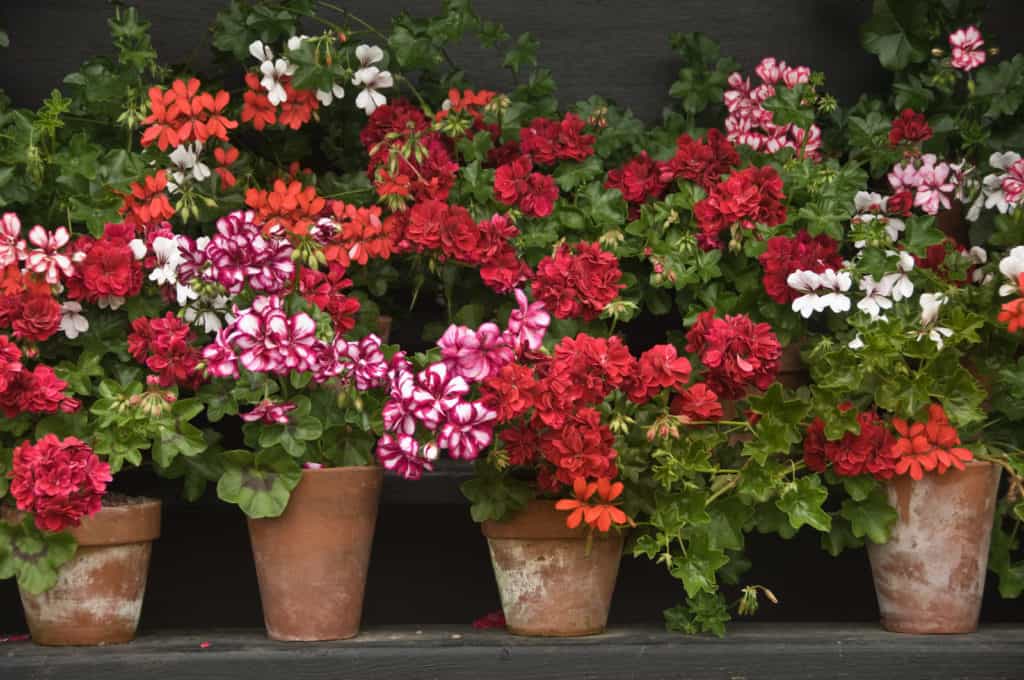The Best Beginner’s Guide To Container Gardening
For those looking to begin gardening or those who only have a patio or small yard, container gardening is a wonderful way to add color to your home. Those with larger yards may also enjoy container gardening as it adds splashes of color to the porch or tucked beside green shrubbery. Many flowers and vegetables that are grown in the garden can grow in containers! This beginner’s guide to container gardening will give you the information to get started and have a full season of color.
Why Begin Container Gardening?
There are many reasons why you may want to begin container gardening:
- People who are apartment dwellers or do not have a yard can still enjoy the pleasure and beauty of gardening.
- By growing in containers, you don’t have to maintain a garden bed.
- When you grow in containers, you can control the soil mixture which allows you to grow plants that aren’t suitable for your natural garden soil such as tropicals, succulents, or cactus.
- You can move containers around your space and “remodel” your space while taking advantage of the shifting sun patterns throughout the season.
- Many plants can be moved indoors when the weather gets colder for a longer growing season. I tend to plant my containers a bit early in the season, but can move them to the garage in case of a frost or hail storm.
How To Get Started With Container Gardening
Container gardening is pretty simple. The four key elements for beginning container garden are containers, soil, plants, and water. Yep. That’s it!! You can do this.
The first thing you need to do is take a look around your space and take note of the sunlight you have. Do you have a really sunny area or is it mostly shady? Then determine the number of containers you want and how large they should be.
Once you have made a list of the things you will need, head to the store to gather your materials.
Tips for Success in Container Gardening
Design
After you have looked at your space, decide how many containers you want. Multiple clusters of different sizes and heights make the most impact. Also odd numbers of plants per cluster are appealing like 3 or 5 pots together. Try one tall, larger planter, two medium planters, and three small pots nestled together.
You may want to choose planters that compliment the colors and style of their setting. Then search for containers of similar color to blend together. Plastic containers are lighter weight and will hold moisture longer. Look for found objects to use as planters to add interest such as teacups or repurposed candle containers.
When choosing your plants remember your note about the lighting you have. Are you looking for full sun, partial sun, or shade loving plants. Be sure to combine plants that will thrive together such as sun loving plants together and shade loving plants together.
Decide on a color scheme and stick with it. Go for contrast in your surroundings. If you put white flowers in front of a white house your flowers will blend in and won’t stand out. Choose a brighter color scheme.
Check out this container garden inspiration photos from Southern Living to inspire you.
Soil
There are so many soil choices and it can get overwhelming at first. Let me help you out so you know exactly what to get for your container garden. It is important that you use a specialized potting mix and not soil you dig up in the yard!
Choose a potting mix for containers. A potting mix is light and stays fluffy whereas a potting soil is for garden beds. The potting mix won’t dry out too quickly and resists compacting. This allows the plant’s roots to drink in the water and retains moisture. By using a potting mix, it also allows the roots to get adequate oxygen which important for growth.
If you can find a mix with water retaining polymers and controlled release fertilizer, all the better! This will help your pots retain moisture and not dry out. The controlled release fertilizer allow your plants to grow quickly with an abundance of blooms.
If you’re not sure if the bag you choose is a potting mix or potting soil pick it up. Go for the lightweight bag as it is most likely a potting mix which is what you are looking for.
Consider topping your pots with shredded bark, gravel, or moss. It not only dresses up the tops of your planters, but also reduces moisture loss due to evaporation.
Drainage
Proper drainage is the life or death to plants. Without proper drainage, the soil becomes too wet, the roots rot, and the plants drown.
If your containers don’t have adequate drainage holes, you will want to drill some in the bottom if you are using plastic. You will want a 1/2″ hole for small containers and a 1″ or a couple small holes for large containers.
Nutrition
If your potting mix did not come with nutrition included in the mix, you will want to add a slow release fertilizer into the potting mix like Miracle Grow. If you would rather go the more natural or organic route, liquid kelp, seaweed, or fish-based fertilizers are an excellent choice.
Even if your soil came with fertilizer mixed in, you will want to supplement with a fertilizer treatment every one to two weeks.
Water
Container Gardens need constant watering to keep the soil moist especially as the summer heat takes hold. You may want to consider investing in self watering containers with built in water reservoirs or drip irrigation systems to assist in keeping your plants hydrated.

Maintenance
Now that your pots are planted and arranged beautifully in your space, you will want to maintain them throughout the season. But don’t worry, it is easy!
- Water frequently– Water your plants 1-2 times a day is recommended as the temperatures rise. Be sure to saturate all of the soil in the pot.
- Fertilize Regularly-In order for your plants to grow quickly and bloom profusely you will want to add additional nutrients throughout the growing season by dissolving a water-soluble fertilizer in the watering can once every week or two.
- Deadhead Often– This means removing the spent blossoms and cutting back any leggy stems. This allows the plant to produce more blossoms. Pinch the flower stems back to just above a leaf or bud. I usually do this once a week to keep my pots full of blooms.
- Check Lighting– If you notice that your plants need to be relocated, do so. You should also rotate the plants every once in a while to encourage the plants on all sides to grow evenly.
Beginning Container Gardening is easy and rewards you the whole season. Once you have made your list based on the tips above, head to the store and have fun with this project.
If you like being out in the yard you might also check out:
Spring Yard Maintenance Checklist
Spring Home Maintenance Checklist


